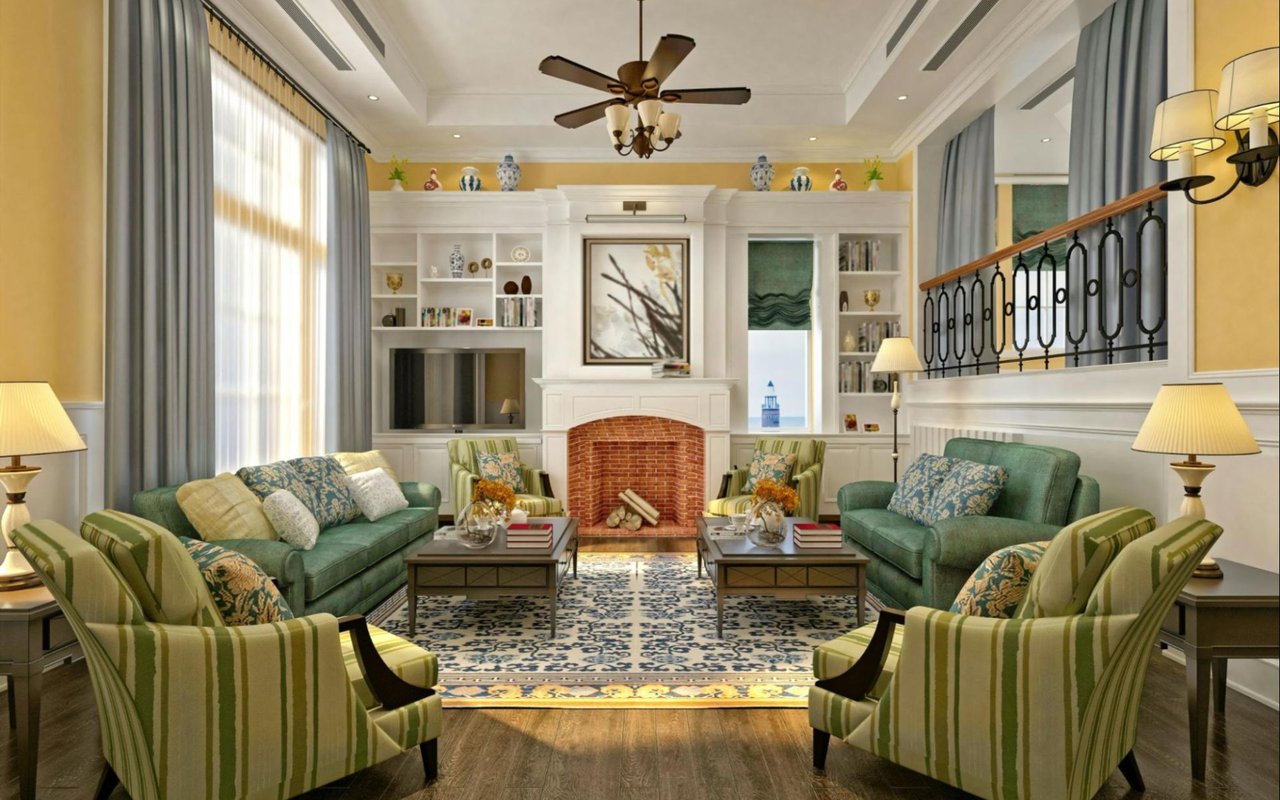Color isn't merely a visual experience; it's a psychological and emotional one. From the tranquil blues of a bedroom to the vibrant yellows of a kitchen, the hues we choose for our living spaces can profoundly impact our mood, productivity, and overall well-being. In the art of interior design, selecting the perfect paint tones is a crucial step towards creating a harmonious and inviting environment. But how do you navigate the vast spectrum of colors to find the ideal palette for each room? Enter the science of color, a fascinating realm where aesthetics meet psychology. In this comprehensive guide,
Jeffrey Earl Warren will delve into the intricacies of color theory and explore practical strategies for choosing paint tones that enhance every room in your home.
Understanding Color Psychology
Before diving into the intricacies of color selection, it's essential to grasp the basics of color psychology. Different hues evoke distinct emotional responses, influencing our perceptions and behaviors. For instance, cool tones like blue and green tend to promote relaxation and tranquility, making them ideal choices for bedrooms and living rooms. In contrast, warm tones such as red and orange exude energy and vitality, making them well-suited for spaces where social interaction and stimulation are desired, like dining areas or home offices.
Creating Balance with the Color Wheel
At the heart of color theory lies the color wheel, a fundamental tool for understanding the relationships between hues. Comprising primary, secondary, and tertiary colors, the color wheel serves as a blueprint for creating harmonious color schemes. One of the simplest methods for choosing paint tones is to utilize complementary colors—those positioned opposite each other on the color wheel. Pairing complementary hues, such as blue and orange or red and green, can create dynamic contrasts that infuse a room with visual interest.
Harnessing the Power of Neutrals
While bold colors can make a statement, neutrals play a vital role in establishing balance and cohesion within a space. Shades of white, beige, and gray serve as versatile backdrops, allowing furniture and accessories to take center stage while providing a sense of openness and tranquility. Incorporating neutral tones into your color scheme can also prevent overwhelming visual stimuli, particularly in small or multi-functional rooms.
Considering Light and Space
When selecting paint tones for a room, it's crucial to consider factors such as natural light, room size, and layout. Natural light can significantly influence how colors appear, with north-facing rooms often benefiting from warmer hues to counteract cooler light conditions. In smaller spaces, lighter shades can create the illusion of openness and airiness, while darker tones can add depth and intimacy to larger rooms. Additionally, assessing the architectural features and furniture placement within a space can help determine which colors will enhance its overall aesthetic and functionality.
Exploring Color Trends and Personal Preferences
While color psychology and design principles offer valuable guidelines, ultimately, the best paint tones are those that resonate with your personal style and preferences. Whether you're drawn to the timeless elegance of muted pastels or the bold sophistication of jewel tones, embracing your unique aesthetic can transform a house into a home. Stay informed about current color trends and explore various palettes to discover hues that reflect your personality and evoke the desired atmosphere in each room.
Practical Tips for Choosing Paint Tones
When embarking on a painting project, consider the following practical tips to ensure a successful outcome:
-
Sample Swatches: Test paint samples on your walls to assess how they appear under different lighting conditions throughout the day.
-
Color Consultation: Consult with a professional color consultant or interior designer for expert advice on selecting the perfect palette for your home.
-
Consider Functionality: Tailor your color choices to suit the specific functions and activities of each room, whether it's promoting relaxation in a bedroom or fostering creativity in a home office.
-
Accent Colors: Introduce accent colors through accessories, artwork, and furnishings to add depth and visual interest to your color scheme without overwhelming the space.
-
Maintenance and Durability: Opt for paint finishes that are easy to clean and maintain, particularly in high-traffic areas such as kitchens and bathrooms.
Elevate Your Home Experience with Jeffrey Earl Warren
In the realm of interior design, choosing the right paint tones is both an art and a science. By understanding the principles of color psychology, mastering the use of the color wheel, and considering practical factors such as lighting and space, you can create a harmonious and inviting environment in every room of your home. Whether you prefer serene neutrals or vibrant hues, let your personal style and preferences guide you as you embark on your color journey. With careful consideration and a touch of creativity, you can transform your living spaces into havens of comfort, beauty, and inspiration.
Find a living space into a reflection of your unique style and personality. Whether you're buying, selling, or renovating,
Jeffrey Earl Warren can help you navigate the world of real estate with confidence and expertise. Jeffrey Earl Warren provides personalized guidance every step of the way. Don't settle for anything less than perfection—reach out to Jeffrey Earl Warren today and unlock the door to your dream home.










